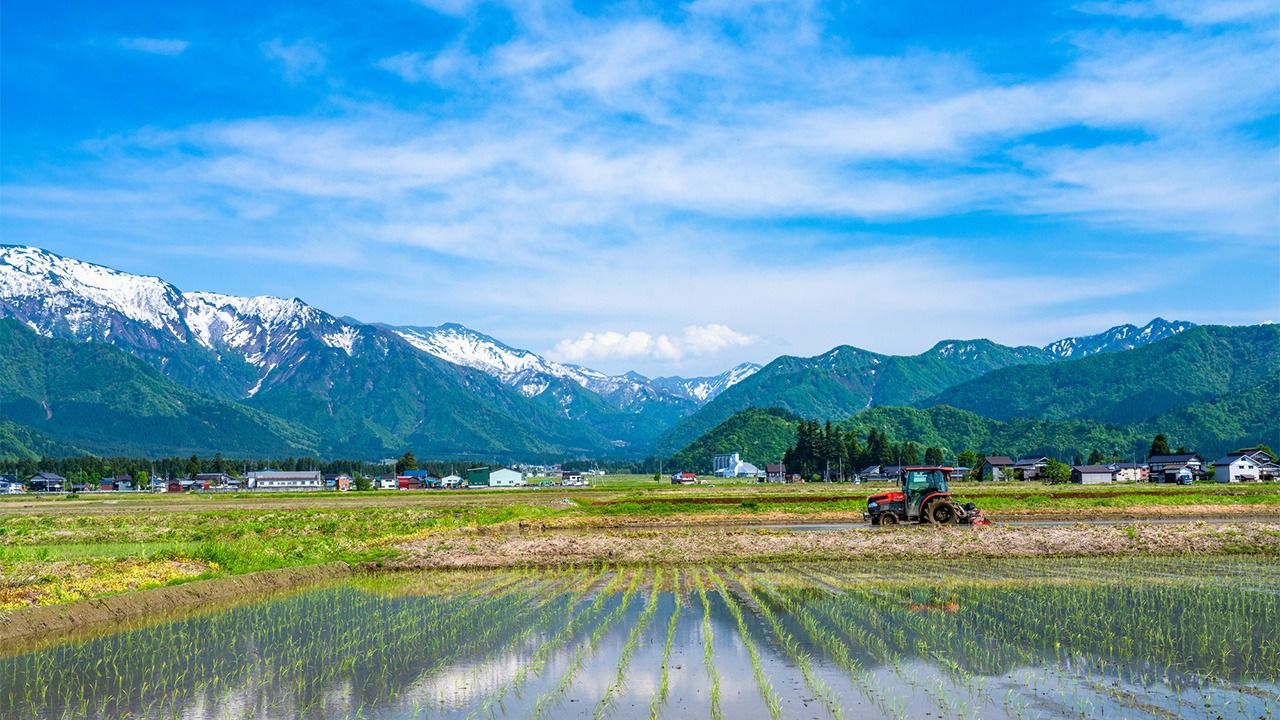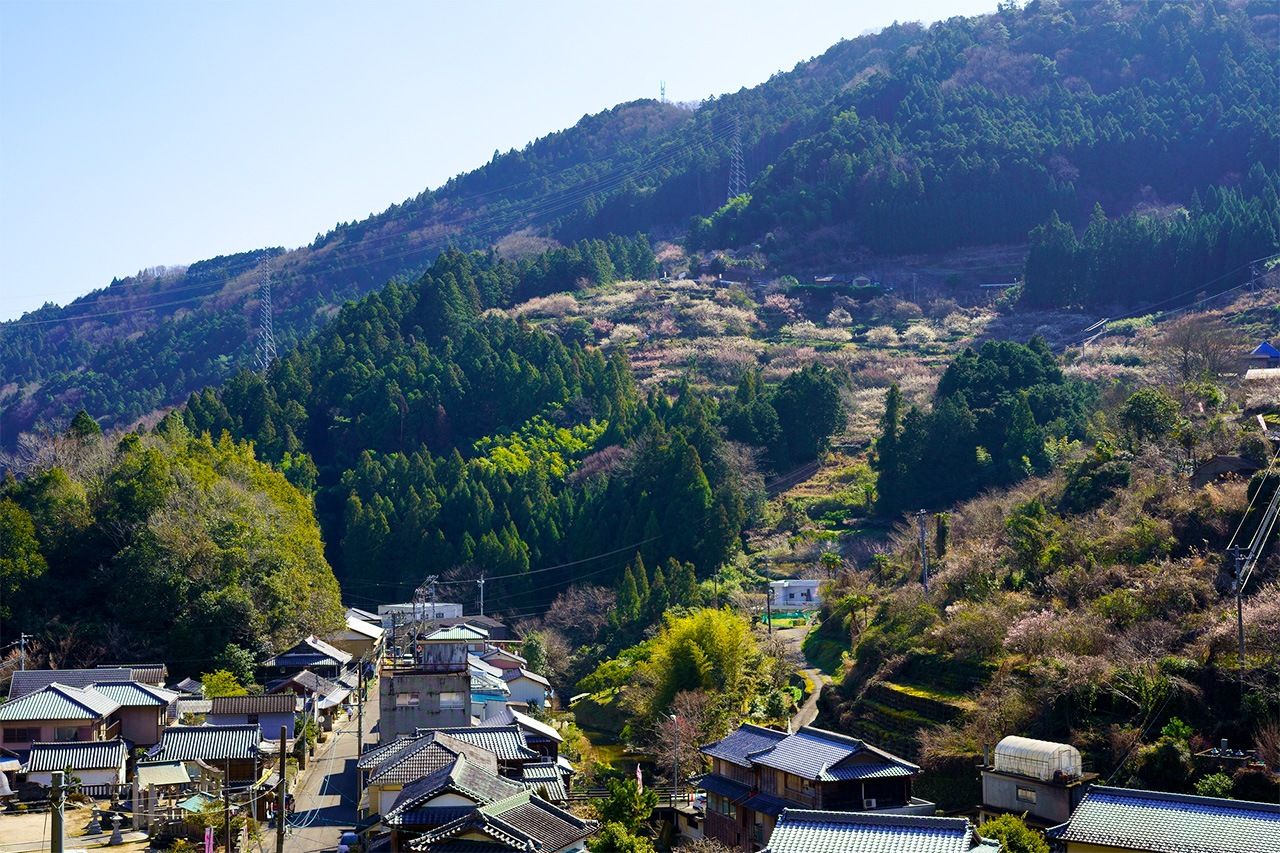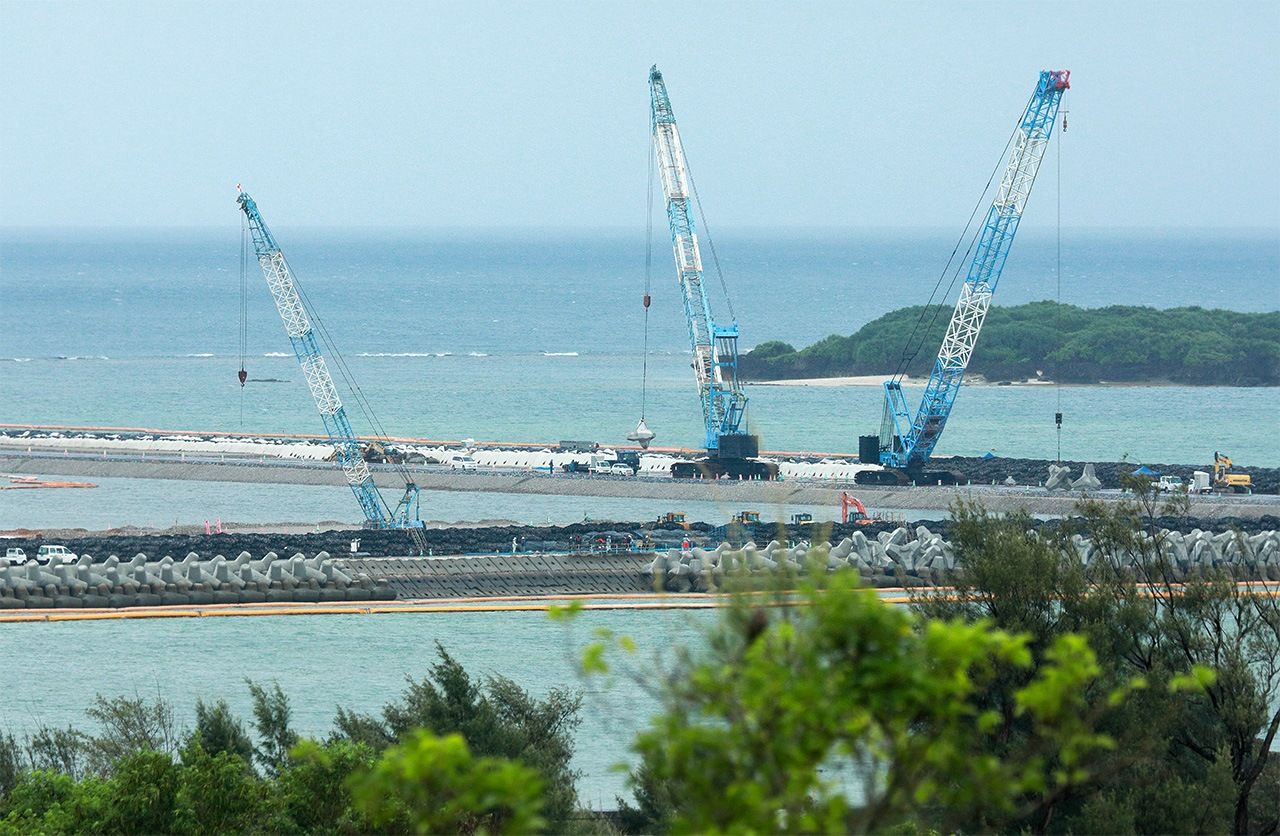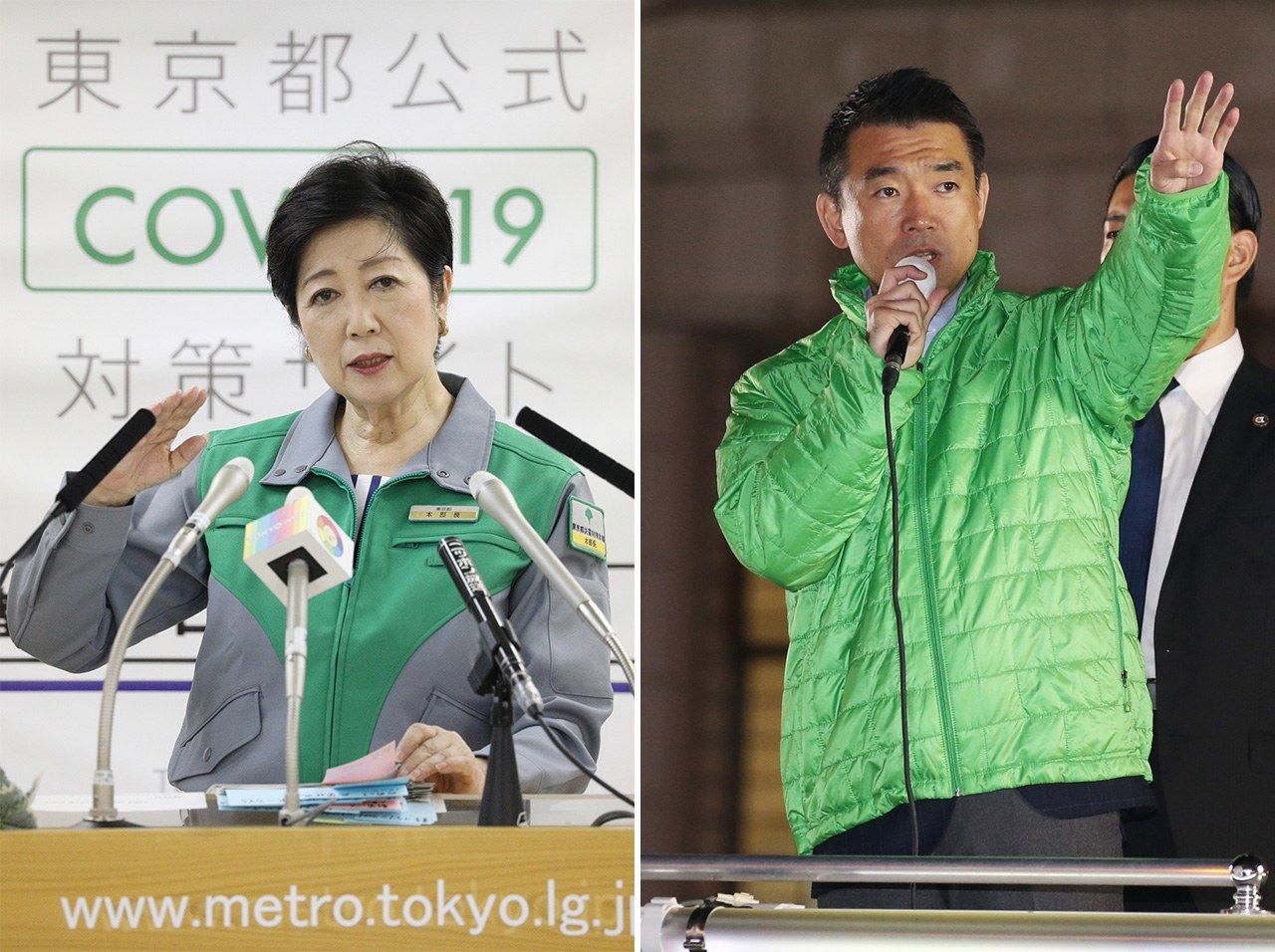
Local Revitalization and Politics in the Abe Era
Politics- English
- 日本語
- 简体字
- 繁體字
- Français
- Español
- العربية
- Русский
Leaving Demographics Unaddressed
In his resignation statement on August 28, 2020, Prime Minister Abe Shinzō spoke of his legacy mainly in terms of Abenomics and various foreign policy achievements, from TPP to collective security legislation. He also lamented unfinished pet projects: constitutional revision, a peace treaty with Russia, and resolution over North Korean abductees.
But hardly a word was mentioned about one of Japan’s greatest challenges—depopulation—and the flagship policy launched in 2014 to combat it: chihō sōsei, or “revitalizing regions.” Prompted by a question about this, Abe conceded: “concentration in Tokyo continues but our administration was able to significantly slow its speed.”
In fact, it hasn’t. The net influx of people into the Tokyo metropolitan area for 2019 was 149,000, double of that when the Abe administration began. Although the current pandemic has sharply reduced the number of those moving to the capital, it is unlikely to be a lasting trend. With the continuing wealth gap between Tokyo and the rest (per capita prefectural income in Tokyo is about 1.65 times the national average), the pull of big city wages remains.
The end of the Abe era has triggered various assessments of his legacies. But little has been discussed about developments in local economy, government, and politics under Japan’s longest premiership. Such an omission is problematic if one wants to understand what Abe achieved and where this country is headed. Japan’s rural regions are vital not only for the country’s demography, but also for its political economy. How successfully has Abe restored balanced development across regions? How well has the central government handled its relationship with local governments and politicians? Below I take stock of local economic revitalization, autonomy, and politics in the Abe era.
Somewhat Local Revitalization
One of the first ways in which Abe sought to differentiate itself from preceding governments was to revive public works spending. The Abe administration passed a law in 2013 and successive budgets aimed at “making the Japanese territory more resilient” against natural disasters. Public works outlays recovered significantly, increasing from ¥4.5 trillion in 2011, toward the end of the Democratic Party of Japan’s government, to ¥7 trillion in 2019. Construction remains a base industry for many rural economies, and the recent frequency of devastating earthquakes and climate-change-induced floods is perhaps making people appreciate well-funded infrastructure. But it is unclear whether such construction spending can be sustainable or create adequately attractive employment to draw people away from cities.
In agriculture, the Abe administration exhorted the sector to “go on the offensive,” joining the TPP to expand agricultural exports and deregulating to facilitate corporate farming. Most of these reforms overcame resistance from the JA farming lobby and affiliated politicians from rural areas. The results have been mixed, however. Income, including from exports, and the number of company-run farms have gone up. Yet the number of full-time farmers has fallen by 20% to 1.4 million, and the country’s calorie-based food self-sufficiency has fallen to 38%.
Besides the traditional rural mainstays of construction and farming, Abe exhorted local governments to come up with their own plans to generate new and sustainable jobs under the chihō sōsei banner. There have been some well-publicized successes: for example, the remote Tokushima Prefecture town of Kamiyama became a hub for satellite offices and venture companies through aggressive tech deployment. But in aggregate, national goals—such as creating 300,000 new jobs for youth in regions, ending the influx of residents to Tokyo by 2020, or shifting more ministry and company head offices outside of Tokyo—have not been reached.

Kamiyama, Tokushima, saw some success in creating IT-powered economic vitality in its rural setting. (© Kozo/Pixta)
Another flagship policy for regional economies pushed by Abe— the brainchild of his probable successor, his chief cabinet secretary, Suga Yoshihide—was the furusato nōzei (hometown tax payment) system. As I describe in greater detail here, the system allows taxpayers to donate a portion of their local taxes to a local government of their choice. In return, recipients send gifts—often local produce, processed foods, or crafts—to thank donors. First introduced in 2008, the scheme exploded in popularity in 2015 after the maximum amount that could be deducted doubled to 20%. The system has been riddled with problems, however: loss of revenue for individual municipalities and the state as a whole; its regressive nature; and beggar-thy-neighbor competition among municipalities. As with many of Abe’s regional vitalization schemes, it has resulted in some winners and a lot of disgruntled losers.
There are other notable developments in local economic policy. The expansion of inbound mass tourism has had mixed benefits for local communities and regional economies, which I write about here. The promotion of various special deregulatory zones has been implicated in corruption scandals such as the suspected cronyism over the Kake Gakuin veterinary school and influence-peddling over casino resorts. And a surge of foreign trainees in rural communities to fill labor shortages in manufacturing and agriculture has made some areas home to burgeoning foreign populations they are ill-equipped to support. And none of these measures has been able to stem population drain from countryside to cities, stagnating fertility rates, or depopulation.
Some believe that the current pandemic will trigger a diaspora from the cities and a paradigm shift toward more rural living, but predicting the demise of urbanization is hasty. After all, Tokyo has survived earthquakes, fires, fire-bombing, chemical attacks, and cycles of boom and recession over the centuries, all the while growing larger in population and wealth. More centralized intervention, rather than local government initiatives, may be necessary to stem urban wealth and job concentration.
Permissible Local Autonomy
Closely linked to local revitalization has been the question of local autonomy.
Since 2000, successive Japanese governments have carried out administrative and fiscal reforms to reduce national government burdens while encouraging competition and innovation among local governments. Decentralization measures to achieve smaller government have been reversed under Abe, with public works spending and local subsidies recovering from DPJ times. But the top-down drive for more local initiative and interregional competition continues, as do bottom-up calls for more discretion and central government financial support.
Despite Abe’s generally cooperative relations with local governments, his term has not been without sharp central-local conflicts. I look at three that reveal the contours of permissible local autonomy in Abe-era Japan: Okinawa, Izumisano, and the COVID-19 response.
In Okinawa, plans to relocate Marine Corps Air Station Futenma and build a new US facility in Nago’s Henoko Bay had been delayed since 1997 due to local opposition. After returning to power and hardening its position to relocate to Henoko, the LDP suffered repeated losses to antibase candidates, failing to win a single parliamentary district seat or gubernatorial contest in Okinawa since 2013. Okinawa’s pleas to stop base construction have continued to be rejected in court, though. In a 2018 local referendum, 71% of Okinawans declared their opposition to construction of a new base. Disregarding these clear local wishes, the Abe administration has plowed ahead with base construction. Landfill work in Henoko Bay is continuing, with the facility expected to be ready by 2030.

Construction continues in Henoko despite Okinawan opposition to the project. (© Jiji)
Abe’s actions have polarized the islanders, with surveys revealing the highest levels of distrust toward mainland Japan and mainstream parties in recent history. There has also been a rekindling of Okinawan identity politics. More substantially, there has been a wider failure to share the burden of the US alliance across Japan. Although the Hatoyama Yukio administration proposed some plans to relocate Futenma to other prefectures, few have willingly offered to take on Okinawa’s unfair burden of bases since then. The failure of collective solidarity among local governments was as significant as Tokyo’s readiness to accept electoral setbacks in defining the limits of local self-determination in Okinawa.
Another center-local conflict suggests that the national government doesn’t always win. In June 2019, the Internal Affairs Ministry excluded Izumisano from the hometown tax donation system, claiming that the southern Osaka Prefecture city had abused the system by offering lavish gifts unrelated to the spirit of the scheme to donating taxpayers. Izumisano fought back, first suing the ministry in the Osaka High Court, which ruled against it, and later appealing to the Supreme Court. In a surprise outcome in June 2020, the top court overturned the lower court decision in a unanimous vote.
In this spat, legal arguments prevailed. The ministry clearly had little ground to stand on in its retroactive application of law. Tokyo has since tightened the boundaries of the scheme, regulating the value and type of gifts to prevent future “abuses” of the system. Izumisano has also seen over 90% of its special subsidies cut during its fight, for which it is suing the ministry in a separate case. These punitive actions suggest how control over the purse can be used by the center to twist the arm of uncooperative local governments.
Finally, the dynamics between Tokyo and various governors over responses to the COVID-19 pandemic during the last few months reveal another side to local autonomy: using it to offload hard decisions and responsibility.
For an administration with a reputation for its top-down style, the Abe administration’s response to the pandemic was reluctant and weak. There was no lockdown, no punitive restrictions on movement, and no commandeering of factories to produce masks or medical equipment as seen elsewhere. Some have argued that this restrained response was due to constitutional restrictions limiting the government’s ability to pass laws that curtail private freedoms.
Another interpretation, though, may be that this indecisiveness was a way of avoiding responsibility. As the Abe administration hemmed and hawed, prefectural leaders took the initiative. The governor of Hokkaidō was the first to ask residents to stay home, Tokyo was the first to provide funds for businesses that voluntarily closed, and Osaka announced clear numerical indicators to determine when to lift pandemic emergency conditions. Wakayama and Yamagata actively set up PCR testing schemes ahead of the national government.
In contrast, the Abe administration’s response remained slow, but furtively interventionist. Its clash with Tokyo was suggestive. “I thought I had the discretion of a CEO, but it turns out that I’m only a midlevel manager,” said Tokyo Governor Koike Yuriko in April, after the central government stopped Tokyo from requesting that certain businesses and facilities shut down during the pandemic’s first wave. Observers argued that the central government was worried that Tokyo would set a precedent for other prefectures, leading them ask the national government to fund compensation for businesses that cooperated.
It is an irony that Abe’s weak-kneed approach during the pandemic has led to plummeting support rates, indirectly contributing to his resignation. This strategy of off-loading responsibility in crisis has backfired; it appears that the Japanese public seek strong leadership, not just polite requests for cooperation, during crisis.
Uncompetitive Local Politics
During the Abe era, we have thus seen three approaches to local autonomy: denying it, accepting it within shifting bounds, and using it to avoid responsibility. Abe has also promoted various local revitalization measures, which though splashy have largely been patchy in results. None of these strategies, though, have produced any negative electoral consequences.
Since 2012, Abe’s party has racked up three landslide victories in elections for the lower and upper houses of the Diet, while recovering its dominant position in local elections. Although absolute vote shares have fallen throughout this period, the LDP has won elections due to a fragmented opposition, its partnership with Kōmeitō, and low turnout. Meanwhile, the opposition has gone through uninspiring cycles of fracture and merger.
When the LDP was ousted from power in 2009, the DPJ captured seats not just in urban areas but widely in rural districts, upsetting longstanding LDP strongholds. Observers believed Japan was finally entering a two-party system with parties largely equally competitive across all districts. This notion was quickly torpedoed with the collapse of the DPJ in 2012 and the failure of the opposition to regroup and stand candidates nationwide. In the meantime, the LDP has re-asserted its grip in many regions. At the prefectural level, the DPJ’s successor parties have fared even worse. Without a strong network of local politicians, as the LDP possesses, the opposition will continue to struggle in recruiting effective candidates and mobilizing voters in the national contests.
The only real challengers the LDP has faced during the Abe administration have been urban governors and their regional parties: Hashimoto Tōru in Osaka and Koike Yuriko in Tokyo. Both failed at the national stage, but at first gathered considerable momentum and public support beyond their regions. Urban electoral revolts like these have always been a feature of Japanese local politics. The question is if, when, and how voters in rural regions will revolt against the ruling party that has been in power for most of the decades since its 1955 founding.

Tokyo Governor Koike Yuriko, at left, in 2020, and Hashimoto Tōru, here shown campaigning for the joint Osaka mayoral and gubernatorial elections in November 2015. (© Jiji)
Somehow the opposition must find a way to persuade the regions from default voting for the LDP. It is not possible to win a national election with solely the support of urban districts, particularly for the House of Councillors; and without substantial presence in local government, both electoral and governance stability will remain difficult. So far, though, the opposition has been too consumed by infighting and lack of resources to build up a network at the local level in many LDP stronghold regions.
Perhaps the next LDP leadership will be more imaginatively committed to reversing the general decline in rural areas. Scratch the surface and all kinds of frustrations emerge: second- and third-generation politicians born and educated in Tokyo who take up their father’s district and hardly ever spend time back home; locally unpopular candidates headquarters parachuted into the regions; conflicts with headquarters over the selection of gubernatorial candidates. Despite these frustrations, there has been no viable alternative for voters in the regions, allowing the LDP to continue winning by default.
Although the population is aging and dwindling, such “left-behind” places still have a disproportionately large share of parliamentary seats. These “left-behind” places have triggered political earthquakes: rural and suburban resentment against the metropoles were key drivers in Donald Trump’s triumph, support for Brexit, and the rise of the far right and antiglobalization protests in Europe. The places that are most taken-for-granted politically can—and often do—hit back.
(Originally written in English. Banner photo: Minamiuonuma, Niigata Prefecture, is among the rural Japanese districts worth watching as the national political scene moves forward. © Machā/Pixta.)
Abe Shinzō local politics policy regional revitalization COVID-19